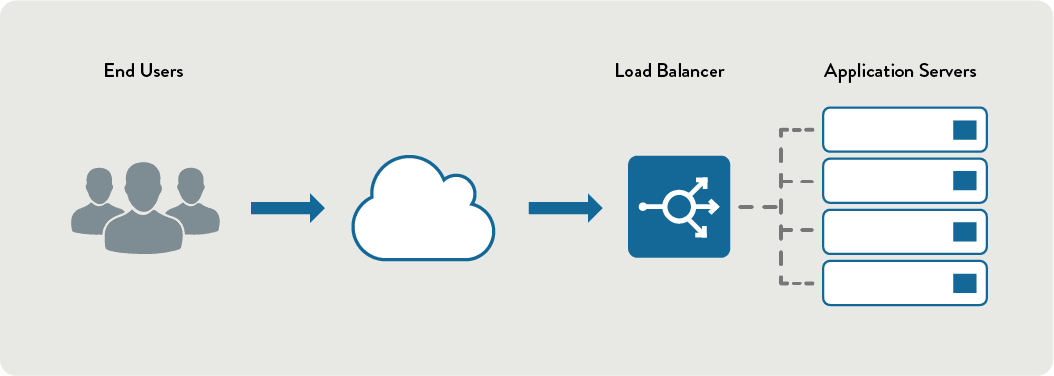
Implementing load balancer is one of the simplest and easiest ways to set up an application with high availability and increase speed (LB). Load balancers are classified into three categories.
- Hardware-based
- Cloud-based
- Software-based
A hardware load balancer is a dedicated appliance that provides load distribution and related functions. Popular LB hardware vendors include:
- TP-Link Barracuda F5
- They are pricey, but they provide you complete control.
Cloud load balancers are more popular than ever. Using cloud LB is one of the most cost-effective solutions to get complete functionality without investing in a physical appliance. You are only charged for what you use. The following are some examples of well-known cloud LB.
- AWS
- Cloudflare by Google Cloud
- DigitalOcean Azure Incapsula
- It can be established for as little as $20 per month.
- The final option is software-based, in which you install, operate, and adjust LB program yourself. This can be commercial or open-source/free software.
10 Open Source Load Balancer for HA and Improved Performance
If you don’t have a budget or want to look into a free load balancer solution, the information below can help.
1. Seesaw Load Balancer
Google uses a dependable Linux-based virtual load balancer server to enable load distribution in the same network. Seesaw is written in the Go programming language and runs well on the Ubuntu/Debian operating systems.
It requires two Seesaw nodes and supports anycast and DSR (direct server return). They might be physical or virtual in nature. It’s worth noting that Seesaw only works with layer four networks; if you need layer seven load balancing, you should look into alternative possibilities.
2. KEMP Load Balancer
On all major hypervisors, KEMP’s FREE sophisticated application delivery controller is supported. You can use it in your own data center or in a cloud data center like as AWS or Azure. It is free, but it includes commercial-level features such as those listed below.
- Layer 4 TCP/UDP load balancing utilizing round-robin or least connection algorithms.
- Balancing on Layer 7.
- Add a web application firewall (WAF).
- Built-in intrusion detection engine (IPS).
- True worldwide server load balancing, including multi-site support.
- Caching, compression, and switching of content.
- Persistence of web cookies.
- Tunneling over IPSec.
- Pre-authentication.
Apple, Sony, JP Morgan, Audi, Hyundai, and other major corporations use KEMP LB. The free edition has enough features; but, if you require more, you can look into their commercial license. If you or your business decide to investigate KEMP LB and want some online training, Mike Walton’s online course is a good place to start.
3. HAProxy

One of the most popular on the market is to provide high availability, proxy, and TCP/HTTP load-balancing. Some of the world’s most well-known brands, such as those listed below, employ HAProxy.
- GitHub for Airbnb
- Reddit Imgur
- Some noteworthy features are as follows.
- IPv6 and UNIX socket Deflate and Gzip compression are supported.
- Check the stickiness of source-based sessions.
- Statistics reporting is integrated.
HAProxy, as expected, has an enterprise version, hardware, and virtual appliance. The easiest way to learn about HAProxy is to use it. Community Edition includes a plethora of features, all of which are free.
4. Zevenet

Zevenet supports L3, L4, and L7 protocols. It is offered as source code, an IOS image, and a Docker repository. It supports extensive health-check monitoring, ensuring that defective servers/services are taken offline as soon as possible to ensure a flawless user experience. Zevenet, formerly Zen, works well with TCP-based protocols such as FTP, SIP, SSL, HTTP, and so on. If you are seeking for Zevenet hosting, Kamatera is a good option.
5. Neutrino Load Balancer

eBay uses Neutrino, which was built with Scala and Netty. With the following switching features, it supports least-connection and round-robin algorithms.
- Using standard names.
- TCP port numbers are used in context-based L4.
Neutrino has been tested to handle 300+ requests per second throughput on a 2-core virtual machine. When compared to HAProxy, one significant advantage of employing Neutrino is L7 switching. But, as usual, experiment with both to find which works best in your situation.
6. Balance
Balance by In lab networks is a TCP proxy round-robin LB that, on the listener side, supports IPv6. This means that IPv4 can be used on the front end and IPv6 on the back end. It has all of the standard LB features.
7. Pen
Pen has been tested on Linux, FreeBSD, HP-UX, Solaris, and Windows, but there is no reason why it should not work on another Unix distribution. It supports UDP and TCP-based protocols such as HTTP, SNMP, DNS, and so on. Along with the basic features, some of the features include SSL termination GeoIP filter IPv4 & IPv6 compatibility.
8. Nginx

I understand what you’re thinking. Nginx is a web server, proxy server, and other services. However, the open-source Nginx server does offer rudimentary content switching and request routing distribution across many servers. The Nginx Plus edition, on the other hand, is significantly more.
Nginx Plus is an all-in-one web application delivery solution that includes load balancing, content caching, a web server, a web application firewall, monitoring, and other features. It offers a high-performance load balancer solution that allows applications to scale to service millions of requests per second.
9. Traefik

A GO-based HTTP reserve proxy and LB that is modern and quick. Traefik supports numerous back-end services. Amazon ECS, Docker, Kubernetes, Rancher, and other services. It supports WebSockets, HTTP/2, automatic SSL certificate renewal with Let’s Encrypt, and a simple interface for managing and monitoring resources.
10. Gobetween
Gobetween is a lightweight yet powerful L4 TCP, TLS, and UDP-based load balancer. It runs on a variety of systems, including Windows, Linux, Docker, and Darwin, and you may build from source code if you’re interested. The following algorithms are used for balancing, which you can configure.
- World-famous IP hash – round-robin
- Minimum bandwidth
- The weakest link
- Weight
According to this test, Go-between outperforms HAProxy but not Nginx. Go-between is interesting if you’re seeking for a modern L4 balancing solution with auto-discovery for a dynamic environment. Try it out and see how it goes.
Conclusion
I hope the list of open-source load balancer software above assists you in selecting one for your application. Because they are all free, the best approach to find out what works is to try them all.






